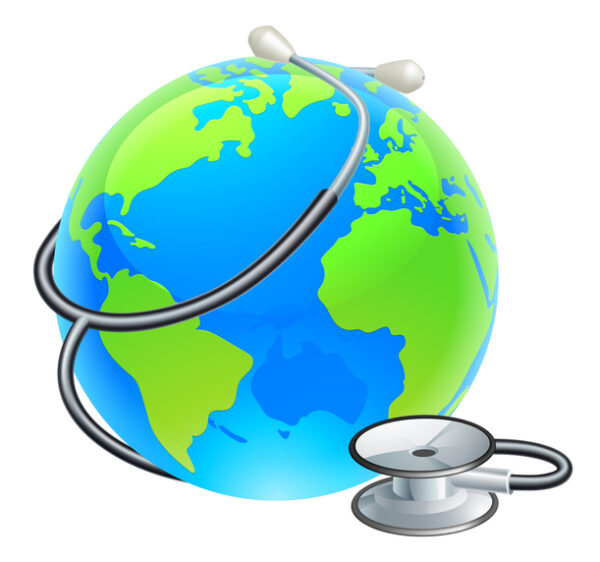
April is Earth Month – a reminder for organizations to consider their footprint on the planet and their journey to better environmental and community outcomes. Hospitals and health systems can face significant environmental and safety challenges when managing waste created through the course of patient care, diagnosis, and treatment. Waste is pervasive – from product design, manufacturing, and distribution to material use, employee workflow, and disposition. Based on regulatory activity nationally, there is an opportunity to improve waste programs and policies within the healthcare industry while potentially reducing costs and enhancing compliance and environmental outcomes – all of which can help create safer work environments that can positively impact employee retention.
One specific waste stream to consider is medical waste, which includes biohazardous, sharps, pathological, and pharmaceutical wastes. Considering the risk of emerging infectious diseases and the 5.9 million tons of waste generated by hospitals in the United States each year, it is critical for organizations to prioritize evaluating their medical waste programs and processes. Leaders should consider these strategies and tips for managing regulated medical waste – this month and beyond – to help contribute to a healthier, cleaner future for all.
Think twice before throwing away pharmaceutical waste
Healthcare is intended to provide preventative, palliative, and other types of care. But if not managed appropriately, the waste and byproducts of care, including pharmaceutical waste, may potentially cause harm to human and environmental health. While the Resource Conservation and Recovery Act (RCRA) hazardous waste pharmaceuticals have strict requirements to prevent risks to human and environmental health, non-hazardous waste pharmaceuticals are not as uniformly regulated. As a result, in some states, healthcare organizations may flush or discard them with solid waste. The U.S. Environmental Protection Agency (EPA) recommends incineration of all pharmaceutical wastes to reduce the impact on our waterways and the environment, but the regulatory requirement to do so varies by state. In the face of this patchwork, healthcare leaders may want to consider developing a comprehensive pharmaceutical waste disposal program to better manage waste in a manner that mitigates negative environmental impact on their community’s water sources.
A comprehensive pharmaceutical waste program will require engagement from multiple stakeholders within your organization as well as external partners. A full-service program through a third-party supplier can support waste determination, provide reusable container options, and help facilities with training, waste segregation, and compliance drivers. Typically, when a facility has such a pharmaceutical waste program, including collection of hazardous, non-hazardous, and controlled substance wastage, it also reduces the guesswork on which medication wastes to collect. A full-service pharmaceutical waste disposal program can help healthcare facilities advance toward more sustainable pharmaceutical waste management, compliance with regulations, and a safer outcome for all.
Opt for reusable sharps containers when possible
Sharps containers are a necessary part of any medical waste program to ensure safer and compliant management of sharps waste. This is another area of opportunity to potentially reduce environmental impact and cost. While many hospitals have transitioned to reusable sharps containers, some hospitals and non-acute facilities still rely on single-use, disposable containers.

As Healthcare and Biopharma Companies Embrace AI, Insurance Underwriters See Risks and Opportunities
In an interview, Munich Re Specialty Senior Vice President Jim Craig talked about the risk that accompanies innovation and the important role that insurers play.
Healthcare professionals should seek out reusable sharps containers as an easy, convenient way to help their organizations be more sustainable as they reduce reliance on single-use plastics and potentially decrease cost by using significantly less product. Each reusable container can be used multiple times (some as many as 600 times), which means less energy and fewer materials in manufacturing, use, transportation, and disposal – let alone the additional burden on supply chain and transportation. Reusable sharps containers may help save organizations money and reduce environmental impact by reducing the purchase and disposal of single-use sharps containers as well as the unnecessary cardboard medical waste boxes for packaging.
Nurture a circular economy in the workplace
Despite advances in healthcare technology and digital records, there is still a notable reliance on paper in the healthcare industry, including physical copies of patient records, identity documents, insurance records, and other health-related documents that contain protected health information (PHI). The Health Insurance Portability and Accountability Act (HIPAA) requires organizations to protect sensitive medical information, adding extra management requirements for paper documentation. Healthcare organizations can help protect both PHI and the planet by using a confidential document destruction service that includes depositing papers in secure containers prior to shredding and the recovery of such shredded paper for recycling into new paper products. This process prioritizes security and sustainability throughout its supply chain and promotes a circular economy – a win-win for both the environment and data protection. A circular economy aims to find beneficial reuse of materials. Creating a circular economy and reuse of materials can help slow climate change by reducing natural resource extraction and processing. Organizations should evaluate opportunities for circularity in other waste areas, such as with reprocessed medical devices or the repurposing of blue wrap. These programs can lead to significant cost and resource savings for organizations as well as potentially reducing emissions. The UN International Resource Panel identified that natural resource extraction can contribute to about half of all global greenhouse gas emissions.
Join forces with a sustainability-forward regulated waste management partner
Just as crucial to instilling a culture of sustainable practices within the workplace is finding a waste management partner that is aligned to your strategic priorities and values. To drive successful outcomes, healthcare organizations need partners that are willing to collaborate and work toward solutions that support their compliance and sustainability-related goals. A successful waste program will include benchmarking your current state and defining goals that directly align or tie into your organization’s strategic operating and sustainability-related plans. Key program design attributes include engagement of appropriate internal and external stakeholders, understanding all requirements, and identification of available capital and resources. Finding a true partner to help support your organization’s compliance and sustainability journey is imperative so you can focus on your employees, patients, and communities.
Your part to play this Earth Month and beyond
Comprehensive waste management is more than an Earth Month imperative. Regulated medical waste is complex and ultimately requires engagement of multiple stakeholders both internal and external to your organization. By adopting responsible practices, the health sector can play a pivotal role in helping to support a more sustainable future for future generations while helping protect employees, patients, and communities.
Photo: ChrisGorgio, Getty Images
Alex Chapman is the Director of Regulatory Affairs at Stericycle, now part of WM Healthcare Solutions. She has spent the last 17 years in the healthcare space, with extensive experience working with organizations to develop and enhance their compliance and sustainability programs through evaluation of waste throughout the value chain. Alex has a particular interest in the intersectionality of sustainability and compliance and its alignment to people, communities, and the environment to drive meaningful results.
This post appears through the MedCity Influencers program. Anyone can publish their perspective on business and innovation in healthcare on MedCity News through MedCity Influencers. Click here to find out how.









